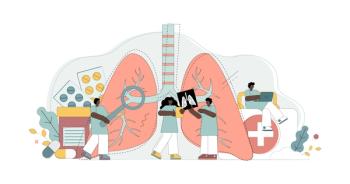
Cancer Overdiagnosis Possible in High-Income US Counties
A new study finds that the incidence of cancer in high-income counties has spiked higher than in low-income counties, but the wealthier areas saw their cancer mortality rates decrease more, which could indicate that overdiagnosis is occurring among well-off populations.
A new study finds that the incidence of cancer in high-income counties has spiked higher than in low-income counties, but the wealthier areas saw their cancer mortality rates decrease more, which could indicate that overdiagnosis is occurring among well-off populations.
According to the
In particular, excessive cancer screening can result in overdiagnosis and avoidable services. Cancers vary in their sensitivity to observational intensity, which is an interplay of factors like screening frequency, detection power, and abnormality threshold. “Observational intensity can have a dramatic effect on the apparent amount of disease—particularly for cancers that have a substantial reservoir of indolent, subclinical forms,” the researchers wrote.
To assess incidence and mortality trends for 4 of these cancers sensitive to observational sensitivity (breast, prostate, thyroid cancer, and melanoma), the researchers employed data from a national epidemiology database. Combined with US Census data on county-level median income, they analyzed the differences in incidence and mortality in high-income counties (median family incomes more than $75,000) and low-income counties (median family incomes less than $40,000).
The analysis, which was restricted to white people to avoid any potential confounding effects from race, found that the incidence of these cancers had risen in both groups of counties since 1975, but the high-income areas saw a much sharper increase in incidence. They hypothesized that wealthier people are exposed to higher levels of observational intensity, meaning they are screened more frequently by more sensitive tests and receive more follow-up testing and biopsies, leading to higher rates of cancers found and reported.
Cancer mortality was similar in both types of counties over the years, as it has shown a steady decrease, potentially due to improvements in therapies. Since 1990, mortality has declined by 40% in high-income counties and 25% in low-income ones, which the authors attributed to better access to innovative treatments in well-off areas.
The researchers hypothesized that the differing incidences of cancer in high- and low-income areas could occur because wealthier people expect and demand more testing, since they can afford it. Additionally, fee-for-service models may incentivize health systems to provide more testing options for richer customers, thus boosting their revenues. Together, these factors could create “a mutually reinforcing cycle that promotes testing as the path to health.”
As the healthcare system attempts to eliminate waste and low-value service, excessive screening and overutilization are important targets, the study authors write. If these tests and services provide little value and cause harm to patients, reducing the frequency of overdiagnosis and its downstream costs could cut spending and improve health.
The researchers recommended transitioning to models like accountable care organizations, which discourage the delivery of low-value care. They also argue that clinicians should refocus their conversations with patients to emphasize total wellness instead of early detection.
“Although we have much to offer people who are sick or injured, physicians have overstated medicine’s role in promoting health,” they concluded. “In so doing, we may have unintentionally devalued the role of more important determinants of health for people at every income level—healthy food, regular movement, and finding purpose in life.”
Newsletter
Stay ahead of policy, cost, and value—subscribe to AJMC for expert insights at the intersection of clinical care and health economics.

















































